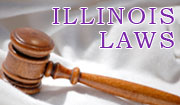Libraries

Violence in the Mass Media
A Guide to Selected Government Information Available at WIU's Government Publications Library
Web version of this guide includes links to web resources.
Federal Government Information
Derivative rights, moral rights, and movie filtering technology
This hearing is about the technology that allows parents to shield their children from violence, sex, and profanity. 2004
Y4. J 89/1: 108-93
An examination of the entertainment industry's efforts to curb children's exposure to violent content
A hearing to determine what the entertainment industry has done and what they are continuing to do to prevent the marketing of violent material to kids. 2001
Y4. C 73/8: 107-60
Family movie act of 2004
This hearing is about protecting companies developing electronic tools to help parents shield their children from violence, sex, and profanity in movies viewed in
the home from copyright infringement lawsuits. 2004
Y4. J 89/1: 108-94
"Violence, Free Speech, and the Media"
This presentation by Sissela Bok offers his thoughts on media violence and public perspective. He examines the link between media and societal violence,
the issue of free speech, the likelihood of increased fear and decreased pity with increased TV viewing, and potential options for change.
Perspectives on Crime and Justice: 1998-1999 Lecture Series Vol. III November 1999 pp. 51-72
J 28.24/3-2:998-99
"Today's Music and Youth Violence"
This presentation examines several cases in which violent music lyrics were instrumental in youth violence and offers that censorship proposals ignore the
underlying reasons why youth listen to "gangsta rap". The author relies on Fromm's theory of malignant aggression in understanding youth with violent tendencies.
Proceedings of the Homicide Research Working Group Meetings, 1997 and 1998 pp. 93-104
J 28.2:H 75/2
Government and Television: Improving Programming Without Censorship
Addresses what the Federal Government can and should do about TV violence. 1997
Y4. G 74/9: 105-218
Music Violence: How Does It Affect Our Children?
Discusses how violence in music affects children. Also addresses the safety sticker policy for music sold in stores. 1997
Y4. G 74/9: 105-395
Neurobiological research and the impact of media
A discussion of the potential impact of the media on children´s health, and on the opportunity for neuroscience and neurobiological research to provide
additional tools and information as we explore this issue. This is a conversation about what sort of cultural environment we wish to provide for our children
and the information that needs to be provided to their parents. 2006
Y4. C 73/7: S.HRG. 108-907
Shaping Our Responses to Violent and Demeaning Imagery in Popular Music
Focuses on popular music that promotes violence, racial derogativeness, and sexual putdowns. Includes excerpts from music of famous musicians that stand for
different racial powers, violence, and hatred. 1995
Y4. J 89/2: S.HRG. 103-1005
Television Violence
Discusses the impact of television violence on youth, making the point that talking about what to do is not going t make any changes, but doing things will. 1995
Y4. C 73/7: S.HRG. 104-369
TV Viewing and Parental Guidance
Explains why parents need to monitor what their children watch. Offers statistics on the amount of time children spend watching TV, the learning advantages of TV
watching, and the maximum amount of violence in one hour of television. Includes suggestions to parents on decreasing TV violence and a list of additional
resources. Oct. 1994
ED 1.308/2:10
Preventing Interpersonal Violence Among Youth; An Introduction to School, Community, and Mass Media Strategies
Offers statistics on U.S. violence, including the availability and number of weapons used, and readiness to be violent. Sections of the book are: "Interpersonal Violence
Among Youth," "Understanding Violent Behavior," "Resolving Conflict Creatively," "Violence Prevention Project", "Mass Media Strategies," and "Expanding the Role of
Criminal Justice Professionals in Violence Prevention." Nov. 1994
J 28.23: V81/5
Music Lyrics and Commerce
Looks at whether or not obscenity in music should be protected by the First Amendment. Included is a statement by Yolanda "YoYo" Whitaker, rapper, who addresses the
point that rap does not cause violence. 1994
Y4. EN2/3: 103-112
Violence in Video Games
A look at how and why video games affect children and at how much influence violence has on youth. 1994
Y4. EN2/3 :103-124
Implementation of the Television Program Improvement Act of 1990
This hearing focuses on certain television network standards on violence in programs for entertainment. 1994
Y4. J89/2: S.HRG. 103-657
Wrestling For Our Children's Future
FCC Commissioner Gloria Tristani spoke before the Congress on Television Violence of Puerto Rico. She gave statistics dealing with the number of children that
are killed everyday and the amount of TV violence viewed by children. Tristani spoke about how children are unable to separate reality from acting. Oct. 12, 1999
http://www.fcc.gov/Speeches/Tristani/spgt916.html
Federal Communications Commission Fact Sheet
This page gives facts about television use, television violence, and influence of television violence on children in America. July 1, 1999
http://www.fcc.gov/Bureaus/Mass_Media/Factsheets/factvchip.html
The Influence of Violent Entertainment Material on Kids: What is to be Done?
The Federal Trade Commission Chairman, Robert Pitofsky, states that when people are raised in a world full of violence, they become desensitized to violence. Thus,
violence is more likely to occur, just because it is "more ordinary." Along with the Justice Department, the FTC reviews the issues on mass media violence and how it
affects people, mainly youth. June 25, 1999
http://www.ftc.gov/speeches/pitofsky/naag99.htm
Psychology of School Shootings
At the testimony presented to the House Judiciary Committee and the hearing about youth culture and violence, Dr. Dewey G. Cornell speaks about what causes youth
violence and why it has become so prevalent. May 13, 1999
http://judiciary.house.gov/Legacy/cor0513.htm
V-Chip Home Page
This site gives information on how to use the v-chip, including a telephone number for parents seeking additional information. The purpose of the v-chip and a
guaranty of protection from violent programs is given. Also has a list of guidelines for programs on television. July 27,1999
http://www.fcc.gov/vchip
Violence in the media
An examination of what appropriate action Congress can take, given the confines of the First Amendment, to assist the entertainment industry in limiting the
exposure of our youth to explicit sex, violence, and other harmful material in music, movies, video games, and the Internet. 2001
Y4. J 89/2: S.HRG. 106-1048
Legal Information
Children's Protection From Violent Programming Act
This bill's purpose is to protect the children of America from harm that can be caused by viewing violence on the television by limiting violent broadcasting to
hours children are less likely to be watching TV. 1997
Y 1.1/2: SERIAL 14407 Senate Report 105-89
Violence As Obscenity: Limiting the Media's First Amendment Protection
Sissela Bok reviews Kevin Saunder's book, Violence as Obscenity, which talks about what is and isn't obscene and what should be done to cut down on violence.
Michigan Law Review May 1997 Vol. 95, No. 6 pp. 2160-2166
Television Violence Report Card Act of 1995
The purpose of this bill is to assess the violence broadcast on television in order to provide consumers with the information necessary to monitor TV viewing. 1996
Y 1.1/2: SERIAL 14338 Senate Report 104-234
http://wiu.edu/libraries/govpubs/guides/violenceInTheMassMedia.php
Subject Guides
- FDLP LibGuides
- Abortion
- Adoption
- Advertising and the Law
- Affirmative Action
- Agriculture
- AIDS
- Alcohol and Related Problems on Campus
- Alternative Dispute Resolution
- Alternative Medicine
- Americans with Disabilities Act
- Animal Research and Humane Care
- Asset Forfeiture
- Aviation Safety
- Capital Punishment
- Censorship - Nonpolitical
- Censorship - Political
- Child Abuse
- Child Care
- Children and Television
- Citizenship & Immigration Services
- Cloning
- Confined Animal Feeding Operations
- Cookbooks
- Cuban Missile Crisis
- Cybercrime
- DNA
- DNA Testing of Criminals
- Domestic Violence
- Drinking and Driving
- Drone Warfare
- Drug Legalization
- Drug Testing
- Earthquakes (Illinois)
- Eating Disorders
- Elder Abuse
- Electronic Surveillance
- Endangered Species and Wildlife Conservation
- Euthanasia
- Federalism
- Financial Crisis
- Flag Desecration
- Gangs
- Global Warming
- Gulf War Illness
- Gun Control
- Hate Crimes
- Hazardous Waste Disposal
- Health Care Reform
- Homelessness
- Home schooling
- Homosexuals in the Military
- Intellectual Property
- JFK Assassination
- Juvenile Justice
- Korean War
- Learning Disabilities
- Literacy
- Methamphetamine
- Occupational Health and Safety
- Operation Desert Shield/Storm
- Police Misconduct
- Pornography
- Prison Reform
- POW and MIAs
- Problems of Adolescence
- Product Liability
- Rape
- Reproductive Technology
- Same-Sex Marriage
- School Prayer
- School Violence
- Seat Belts
- Sexual Harrassment in Education
- Sexual Harrassment in the Workplace
- Sexual Orientation Discrimination
- Small Business
- Space Exploration
- Terrorism
- Tobacco
- Unmanned Aerial Vehicles
- Vietnam War
- Violence in Mass Media
- Welfare Reform
- Women in Business
- World War I
- World War II




